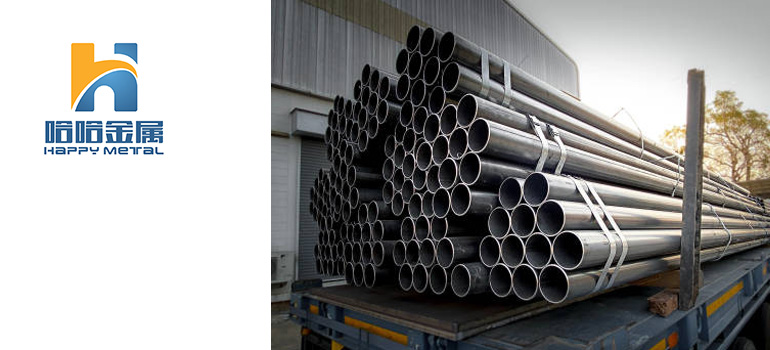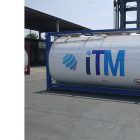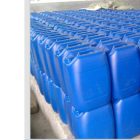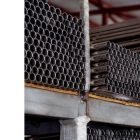Summary:
Understanding Stainless Steel Pipe Classification Based on Application Needs
What is Stainless Steel Pipe Classification?
Different Types of Stainless Steel Pipes and Their Applications
Industries That Rely on Stainless Steel Pipe Classification by Application
Stainless steel pipes are widely used across various industries, from construction to food processing, thanks to their durability, resistance to corrosion, and strength. However, not all stainless steel pipes are the same. The classification of stainless steel pipes by application is crucial because different industries require specific features and properties to ensure safety, efficiency, and longevity in their operations. Understanding how stainless steel pipes are classified based on their application needs is the first step in choosing the right pipe for your project.
What is Stainless Steel Pipe Classification?
Stainless steel pipe classification refers to the process of categorizing pipes based on the specific requirements of the application they will serve. The classification system takes into account various factors, such as material composition, strength, resistance to corrosion, and the ability to withstand extreme temperatures or pressures. In simple terms, it helps determine which type of stainless steel pipe is best suited for a particular purpose. Whether it’s a pipe for a high-pressure steam system or one used in food processing, each application demands a unique set of characteristics from the stainless steel pipe.
Importance of Application-Based Classification in Industry
Why is application-based classification so important? Industries have very different requirements when it comes to the materials they use, and the demands placed on a pipe vary significantly depending on the environment. For instance, pipes used in a chemical plant need to resist aggressive acids, while pipes in the food industry must meet strict hygiene standards. Application-based classification ensures that the correct type of pipe is selected, minimizing the risk of failures, reducing maintenance costs, and ensuring compliance with industry standards and regulations. Without this classification, the wrong pipe could lead to leaks, contamination, or even system failures, which can be costly and dangerous.
How Stainless Steel Pipes Are Used Across Various Industries
Stainless steel pipes are incredibly versatile, which is why they are used in such a wide array of industries. In construction, they may be used for structural frameworks or piping systems. In the oil and gas industry, stainless steel pipes are vital for transporting oil, gas, and other substances under high pressure. The automotive industry uses them for exhaust systems, while the pharmaceutical and food industries rely on them for clean, non-reactive systems that meet stringent regulatory requirements. Understanding how stainless steel pipes are classified by application allows businesses and engineers to select the most appropriate type for each specific use case, ensuring optimal performance and safety.
Different Types of Stainless Steel Pipes and Their Applications
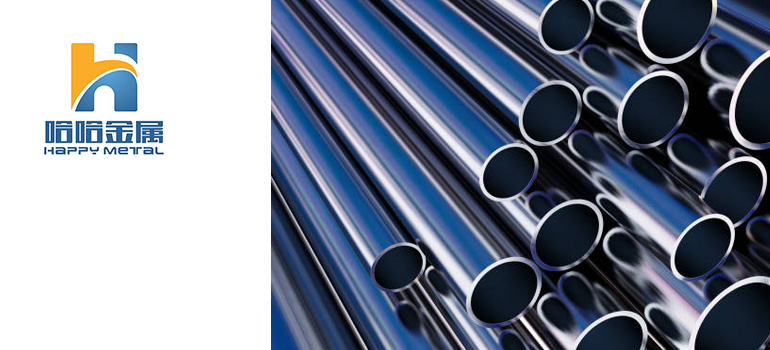
Stainless steel pipes come in various types, each with unique characteristics suited for different applications. Depending on the manufacturing process, material grade, and design standards, pipes can be categorized into welded pipes, seamless pipes, spiral-welded pipes, and more. Understanding these types and their specific applications will help you choose the right pipe for your needs.
Welded vs Seamless Stainless Steel Pipes
Welded and seamless pipes are two of the most common types of stainless steel pipes. The primary difference lies in their manufacturing processes:
Welded Pipes: Welded pipes are made by welding stainless steel strips together to form a pipe. This process involves welding a seam along the length of the pipe. Welded pipes are typically used for applications that don’t require extremely high pressure, as the welded seam may have slightly lower strength compared to seamless pipes. These pipes are widely used in industries like construction, residential water systems, and general plumbing.
Seamless Pipes: Seamless pipes are made by heating and extruding a solid billet of stainless steel into a hollow tube, without any welded seams. As there are no seams, seamless pipes offer higher strength and are more resistant to pressure. They are ideal for high-pressure and high-temperature environments, making them essential in industries like oil and gas, chemical processing, and power generation.
Common Applications for Stainless Steel Pipes
Different types of stainless steel pipes are used across a wide range of industries based on their properties. Here are a few examples of common applications for stainless steel pipes:
Food and Beverage Industry: Stainless steel pipes are commonly used in the food processing industry to transport raw materials, liquids, and gases. Due to their excellent resistance to corrosion and ease of cleaning, they are widely used in food and beverage processing plants. The most commonly used grades are 304 and 316 stainless steel, which provide excellent corrosion resistance, particularly in acidic or alkaline environments.
Chemical Industry: The chemical processing industry often requires pipes that can withstand aggressive chemicals. Stainless steel pipes with enhanced corrosion resistance, such as 316 and 321 grades, are commonly used in this industry for transporting chemicals, pharmaceutical materials, and liquids in chemical reactions. These materials provide durability and long service life in environments exposed to harsh chemicals.
Oil and Gas Industry: In the oil and gas industry, stainless steel pipes are used to transport oil, gas, and other substances under high pressure. Seamless pipes, especially those made from grades like 316L and 310 stainless steel, are chosen for their ability to handle high pressure and extreme temperatures. These pipes are critical for operations in offshore drilling, refineries, and pipelines.
Medical and Pharmaceutical Industries: The medical and pharmaceutical industries require strict hygiene standards, making stainless steel pipes a go-to choice for sanitary applications. 316L stainless steel, which contains low carbon content, is widely used in making medical equipment, pharmaceutical delivery systems, and piping for sterile environments, where cleanliness is paramount.
Choosing the Right Stainless Steel Pipe for Your Needs
Selecting the right stainless steel pipe involves considering several factors, such as material grade, corrosion resistance, temperature and pressure ratings, and the specific environment in which the pipe will be used. For instance, the food industry may prioritize the cleanliness and corrosion resistance of the pipe, while the chemical industry may focus more on the pipe’s ability to resist aggressive substances.
In addition to the material grade, factors like pipe size, wall thickness, and whether the pipe is welded or seamless must also be taken into account. For high-pressure and high-temperature applications, seamless pipes are preferred, and choosing the correct wall thickness is essential to ensure strength and reliability under demanding conditions.
Industries That Rely on Stainless Steel Pipe Classification by Application
Stainless steel pipes are indispensable in various industries, and each of these industries has specific needs that require certain types of stainless steel pipes. The classification of stainless steel pipes by application is essential for ensuring that the pipes used meet the performance, durability, and safety standards necessary for the industry. Let’s explore some of the key industries that rely on the classification of stainless steel pipes by their application.
Chemical and Pharmaceutical Industries
The chemical and pharmaceutical industries require stainless steel pipes that can withstand highly corrosive environments. These industries often deal with aggressive chemicals, acids, and solvents, which demand pipes that are resistant to corrosion, wear, and degradation. For example, 316L stainless steel is commonly used in these sectors due to its excellent resistance to corrosion and the ability to maintain purity in sensitive applications.
In pharmaceutical manufacturing, stainless steel pipes are used to transport raw materials, chemicals, and even finished products. The hygiene and cleanliness of the pipes are paramount, as even the slightest contamination can affect the quality of products. Stainless steel pipes with smooth surfaces are preferred in these applications to facilitate cleaning and avoid contamination.
Food and Beverage Industry
The food and beverage industry is another sector that relies heavily on stainless steel pipe classification by application. Pipes used in food processing need to meet stringent health and safety standards, and must be made from materials that do not react with food or beverages. Stainless steel is a natural choice because of its resistance to rust, corrosion, and its ability to be easily cleaned, which is crucial for maintaining food safety.
304 and 316 grades of stainless steel are commonly used in this industry, as they meet both the durability and hygiene standards required for handling food products. Stainless steel pipes are used in the transportation of liquids, gasses, and even solids throughout the processing stages, from raw material delivery to final product packaging. Their non-reactive nature also ensures that the flavor and quality of food and beverages remain intact.
Oil and Gas Industry
The oil and gas industry demands stainless steel pipes that can handle extreme temperatures, pressures, and corrosive substances. Pipes in this sector are essential for the transportation of oil, gas, and other fluids through pipelines, rigs, and refineries. The type of stainless steel used must offer high resistance to pressure, corrosion, and wear, particularly in environments exposed to seawater, acids, and gases.
In oil and gas extraction, stainless steel pipes such as 316L and 310 grades are preferred due to their ability to withstand both high temperatures and corrosive environments. These pipes are also essential in offshore drilling, refining processes, and petrochemical plants where safety and reliability are crucial. The classification of stainless steel pipes for these applications ensures that the right pipe is selected for each phase of production, minimizing risk and ensuring a steady flow of materials.
Power Generation and Construction Industries
In the power generation and construction industries, stainless steel pipes are used in high-pressure and high-temperature environments. For instance, in power plants, stainless steel pipes are crucial for transferring steam, hot gases, and fluids under intense conditions. These pipes must withstand thermal expansion, high-pressure environments, and the potential for mechanical stress. Therefore, seamless stainless steel pipes made from heat-resistant alloys like 310 stainless steel are commonly used in power plants and other industrial applications where high-performance material is required.
Similarly, in the construction industry, stainless steel pipes are utilized in a variety of applications, from structural components to plumbing and HVAC systems. Their durability, resistance to rust, and ability to handle both hot and cold water make them a reliable choice for plumbing systems in commercial and residential buildings.
Automotive Industry
The automotive industry also relies on stainless steel pipes, particularly in exhaust systems and cooling systems. Stainless steel’s resistance to high temperatures, corrosion, and mechanical wear makes it ideal for use in vehicle exhaust systems, which are exposed to extreme heat and exhaust gases. Additionally, stainless steel pipes are used in the cooling systems of vehicles to ensure that engines run at optimal temperatures without corrosion affecting performance.
Grade 304 and 409 stainless steel are typically used in automotive exhaust systems, while higher grades like 316 stainless steel may be used in more demanding applications, such as racing cars or vehicles operating in harsh environments.

